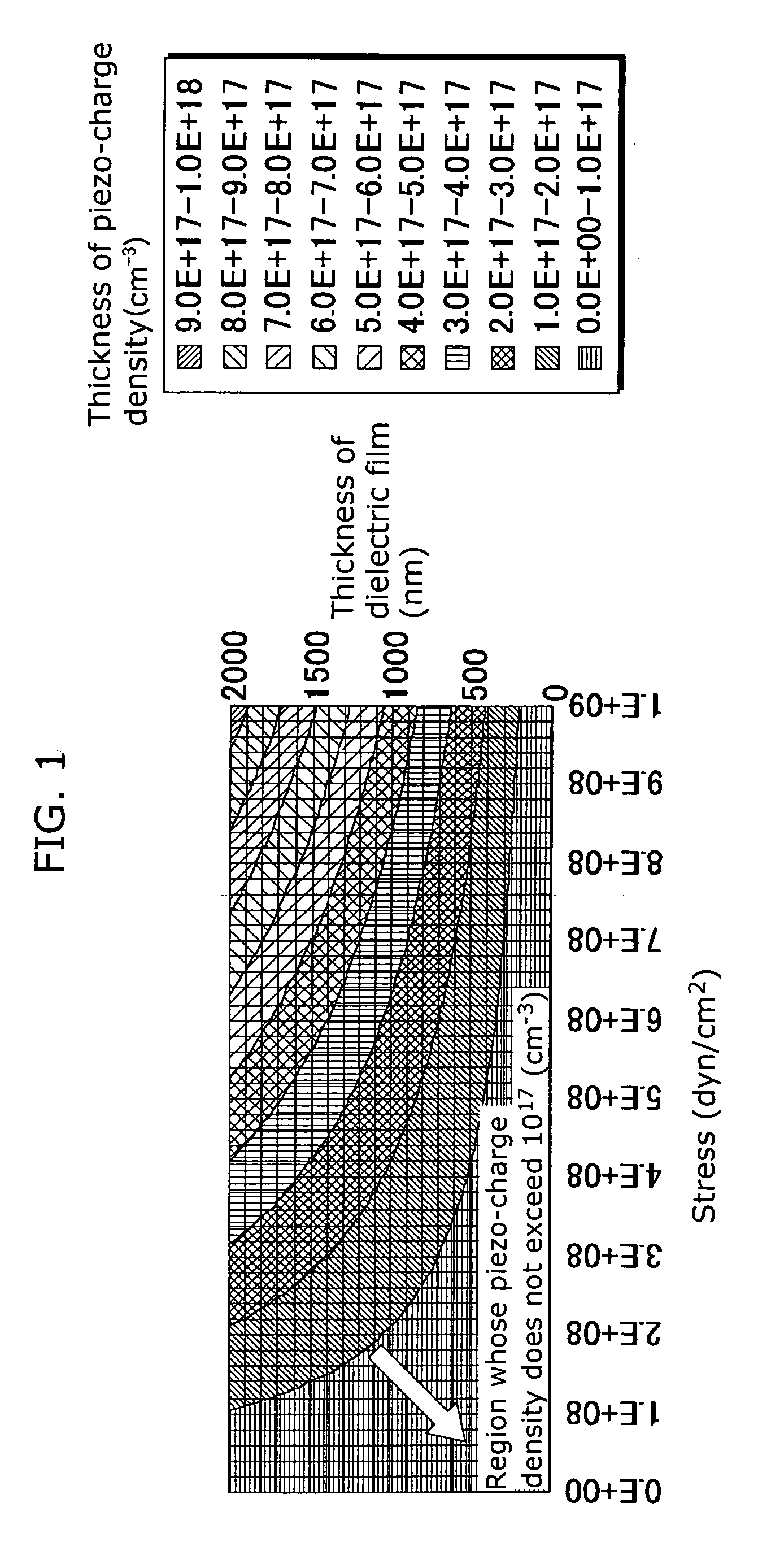Semiconductor device
a technology of electronic devices and semiconductors, applied in semiconductor lasers, instruments, optical elements, etc., can solve the problems of difficult to accurately dope a semiconductor with impurities, difficult to control pinch-off voltage, and difficult to give accurate carrier profiles through doping. achieve the effect of suppressing the local generation of piezo-charge, accurately controlling carrier density, and accurately controlling carrier density
- Summary
- Abstract
- Description
- Claims
- Application Information
AI Technical Summary
Benefits of technology
Problems solved by technology
Method used
Image
Examples
first embodiment
[0056]FIG. 2A is a diagonal view showing a Field-effect Transistor (FET) according to the first embodiment. FIG. 2B is a cross-sectional view of the FET at the A-A′ line shown in FIG. 2A. Note that FIG. 2A is a pattern diagram showing a part in which one FET is formed upon a wafer.
[0057] The FET according to the embodiment includes: a single crystal substrate 105; a semiconductor layer 101 which is made of hexagonal crystal with 6 mm symmetry, being In(x)Al(y)Ga(z)N (1-x-y-z) where 0≦x, y, z≦1, and x+y+z=1, and x, y and z are not simultaneously 0, and is formed on the main surface of the single crystal substrate 105 by epitaxial method; a source electrode 102; a drain electrode 103; and a gate electrode 104 which are formed on the main surface of the semiconductor layer 101.
[0058] The single crystal substrate 105 may be, for example, a sapphire substrate having R-plane as the main surface, or a silicon carbide (SiC) substrate having (11-20) plane as the main surface, or a GaN subs...
second embodiment
[0073]FIG. 6A is a diagonal view showing the FET according to the second embodiment, whereas FIG. 6B is a cross-sectional view of the FET at the line A-A′ in FIG. 6A. Note that FIG. 6A is a pattern diagram showing a part in which one FET is formed on a wafer. The same referential numbers are put for the same components as shown in FIG. 2, so that detailed description thereof is not repeated here.
[0074] The FET of the present embodiment differs from the FET according to the first embodiment in that the former has an active region whose length direction is vertical to the C-axis direction of hexagonal crystal, and is made up of a single crystal substrate 105 and a semiconductor layer 121 which is made of hexagonal crystal of 6 mm symmetry and is formed on the main surface of the single crystal substrate 105 based on an epitaxial growth method, a source electrode 102, as well as a drain electrode 103 and a gate electrode 104 which are formed on the main surface of the semiconductor la...
third embodiment
[0080]FIG. 7 is a diagonal view showing a structure of the semiconductor laser device according to the third embodiment.
[0081] The semiconductor laser device according to the present embodiment includes: an n-type GaN substrate 146 having (11-20) plane as the main surface; a semiconductor layer 141 which is made of In(x)Al(y)Ga(z)N (1-x-y-z), where 0≦x, y, z>1, and x+y+z=1, and x, y and z do not indicate 0 at the same time of hexagonal crystal with 6 mm symmetry, and which is formed on the main surface of the n-type GaN substrate 146 based on epitaxial growth method; an n-type electrode 147 which is formed on the rear surface of the n-type GaN substrate 146 and is made of, for instance, Ti, Au and the like; and a p-type electrode 148 which is formed on the main surface of the semiconductor layer 141 and has a multi-layered structure made of, for example, Ni, Pt and Au. Note that the size of one semiconductor laser device within the surface of the substrate is 500 μm×300 μm (500 μm ...
PUM
 Login to View More
Login to View More Abstract
Description
Claims
Application Information
 Login to View More
Login to View More - R&D
- Intellectual Property
- Life Sciences
- Materials
- Tech Scout
- Unparalleled Data Quality
- Higher Quality Content
- 60% Fewer Hallucinations
Browse by: Latest US Patents, China's latest patents, Technical Efficacy Thesaurus, Application Domain, Technology Topic, Popular Technical Reports.
© 2025 PatSnap. All rights reserved.Legal|Privacy policy|Modern Slavery Act Transparency Statement|Sitemap|About US| Contact US: help@patsnap.com



